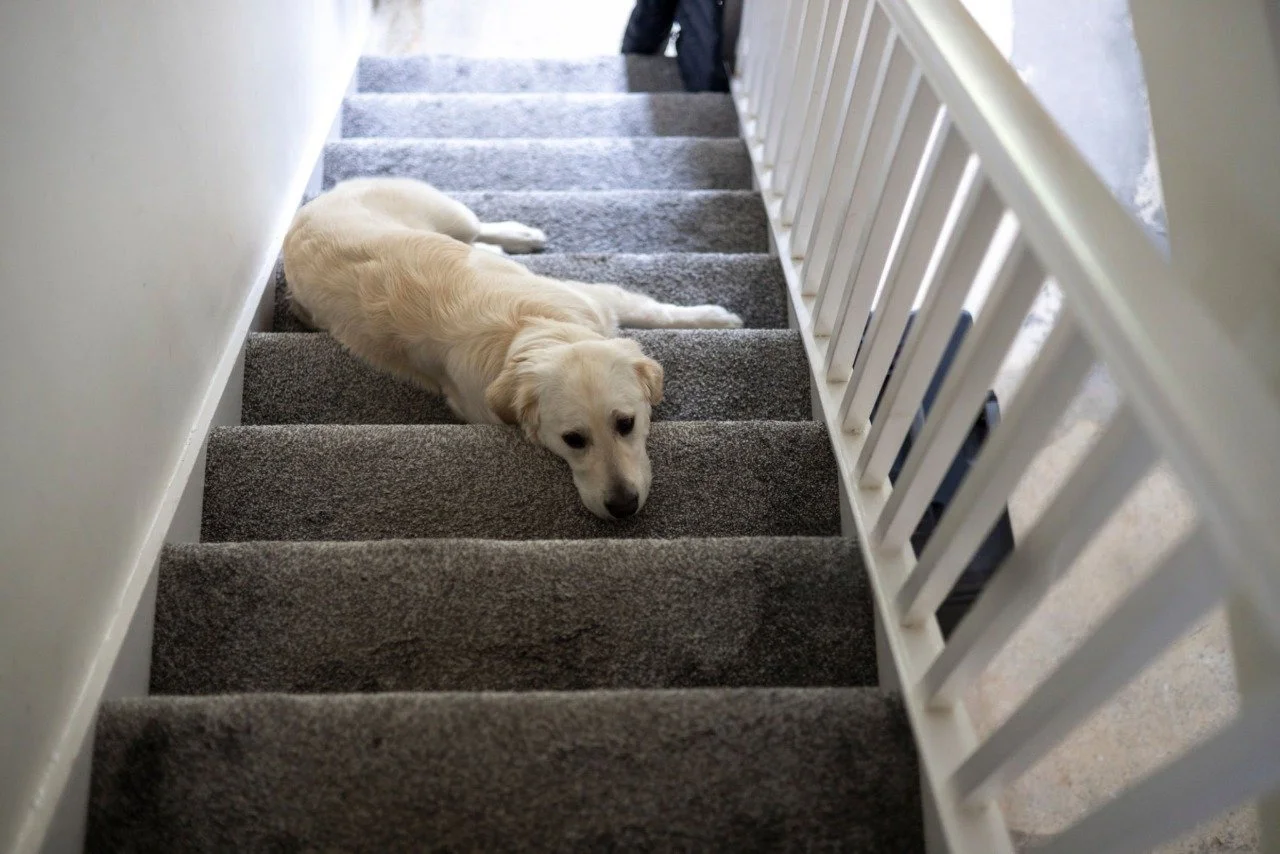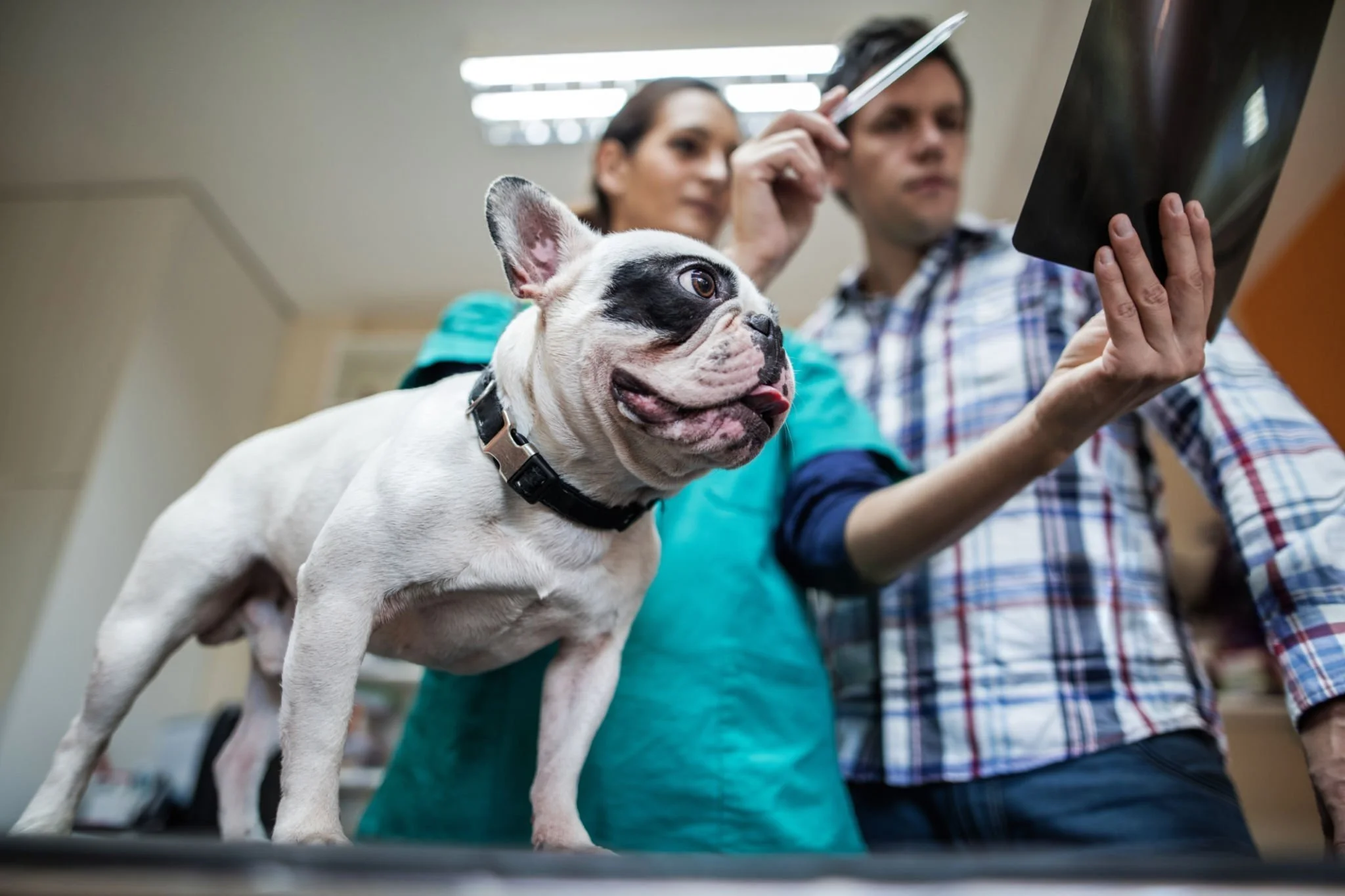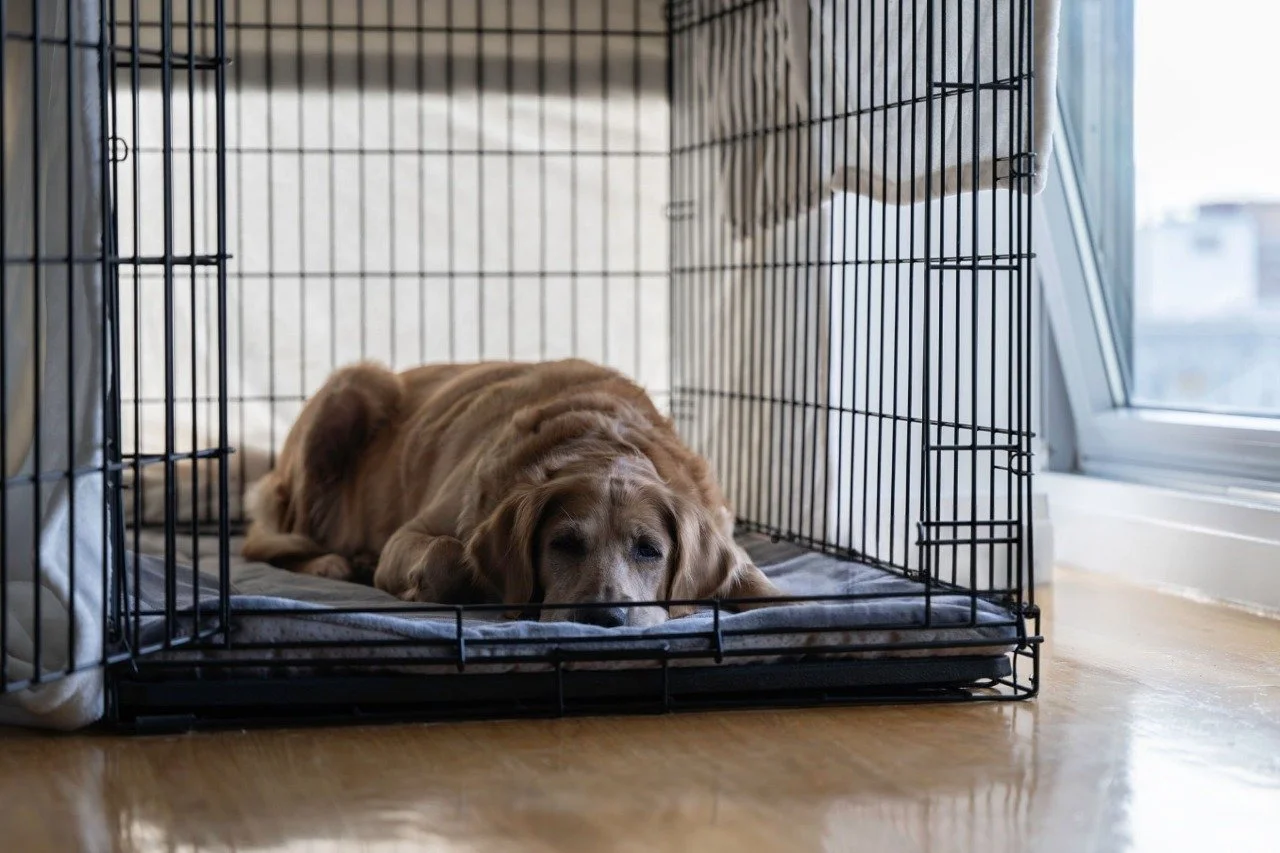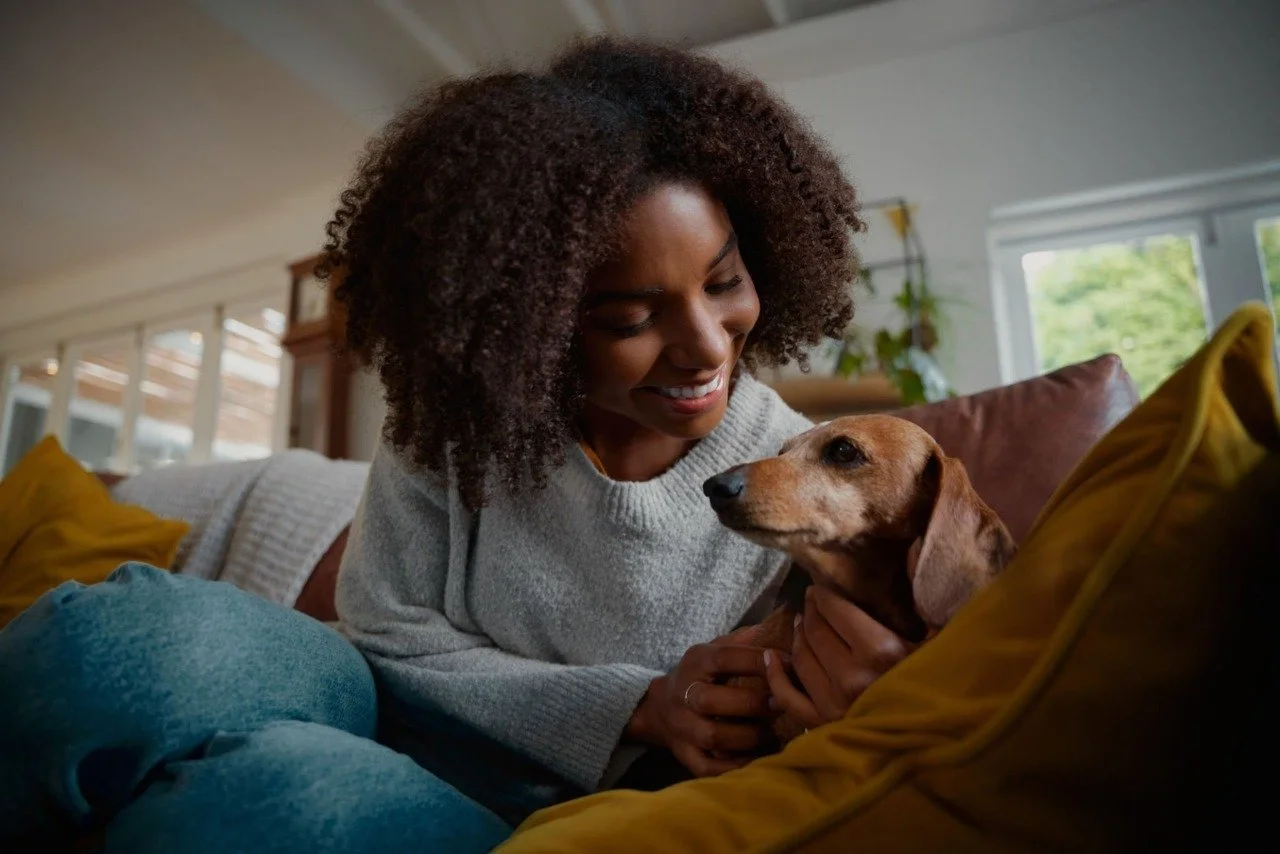Is Your Dog in Pain? What to Know About IVDD
Intervertebral Disc Disease (IVDD) is one of the most common spinal conditions in dogs, and it often shows up without warning. What starts as a small change in movement or behavior can quickly become something more serious. Knowing how to spot the signs and when to act can make all the difference in your dog’s comfort, mobility, and recovery.
Why pain in dogs shouldn’t be ignored
Not every limp or odd step is “just old age.” Sometimes it’s a sign of something deeper—especially when it involves the spine. IVDD is a leading cause of spinal issues in dogs and can escalate fast.
Dogs can go from zooming around the house to struggling to stand in a matter of hours. Because symptoms can come on quickly and don’t always look dramatic, it’s easy to miss in the early stages. But knowing the signs and acting fast can dramatically change your dog’s outcome.
What IVDD actually is
Intervertebral Disc Disease happens when the discs between a dog’s spinal vertebrae start to deteriorate or rupture. These discs normally provide cushioning and flexibility—but when they fail, the spine can’t move properly. That breakdown puts pressure on the spinal cord and surrounding nerves, triggering pain, inflammation, and sometimes paralysis.
There are two types:
Type I IVDD: A sudden, explosive rupture of the disc, often seen in younger dogs with long backs and short legs. The disc material shoots out into the spinal canal and causes acute symptoms.
Type II IVDD: A gradual disc bulge that develops over time, more common in older or larger dogs. It causes slower, progressive signs that are easier to miss at first.
Did You Know? French Bulldogs are now the second most common breed diagnosed with IVDD, right behind Dachshunds. Their compact build and genetic predispositions put them at higher risk, even at a young age.
Spotting the signs early
IVDD doesn’t always make itself obvious. Many pet parents first notice something small: maybe their pup skips a stair or lets out a yelp when lifted. It's easy to chalk it up to a pulled muscle or soreness from play, but spinal injuries aren’t always dramatic at first.
That’s why it’s important to pay close attention to how your dog moves and reacts to touch. Subtle behavior shifts might be the only clue early on. What starts as a minor limp can quickly progress to full-blown weakness or paralysis if the spinal cord becomes compressed.
Things to watch for:
Hesitation to jump or climb stairs
Sudden crying out or vocalizing when touched
Arched back or tense posture
Limping or crossing the legs when walking
Loss of bladder or bowel control (common in more advanced cases)
These can vary depending on whether the injury is in the neck or back. A neck injury might show up as stiffness or low head carriage, while a lower spine issue can cause weakness in the hind legs.
What to do if you think it’s a back issue
If you notice signs that might point to IVDD, limit your dog’s movement right away as rest is critical. The goal is to reduce spinal motion and prevent worsening the injury. Next, call your vet or local emergency hospital and describe what happened and what symptoms you're seeing. They may recommend coming in for an exam, or in severe cases, heading straight to a specialist.
Quick emergency action plan:
Restrict your dog’s movement immediately (crate rest or small space)
Contact your vet or emergency hospital for next steps
Support your dog’s spine when lifting or transporting them, making sure to keep them as calm and comfortable as possible
Important! Avoid giving over-the-counter pain meds unless instructed. Some can interfere with diagnostics or make things worse, so always consult with your vet or a professional first.
How to diagnose and treat it
Your vet will perform both a physical and neurologic exam to assess spinal reflexes, limb strength, and pain response. One critical piece of the puzzle is whether your dog still has deep pain perception—the ability to feel and respond to strong pressure on the paw or toes.
From there, diagnostics may include:
X-rays to look at disc spacing and rule out fractures
MRI or CT scans, usually done by a neurologist, to confirm the diagnosis and plan for surgery if needed
Treatment depends on the severity:
Mild to moderate cases: Conservative management includes strict crate rest (usually 4–6 weeks), anti-inflammatories, and pain relief.
Severe cases: If your dog is unable to walk or has lost deep pain, surgery is typically recommended—and timing matters. The best outcomes happen when surgery is performed within 24-48 hours of losing pain response.
Prognosis by severity:
With deep pain and early surgery: 85–95% recovery
Without deep pain: Prognosis drops significantly, but some dogs still improve with surgery and rehab
With conservative care: Many dogs improve with rest alone, especially if treated early
Did You Know? If surgery isn’t an option for financial or medical reasons, don’t lose hope. There are often times funds set up to assist families who cannot afford medical emergencies for their pets. Check with your vet or emergency hospital for resources if needed!
Recovery and long-term management
Recovery from IVDD depends on the type, severity, and treatment. Some dogs bounce back with crate rest, anti-inflammatories, and physical therapy. Others may need surgery, mobility aids, or lifestyle changes to prevent recurrence.
Here’s how to support your dog during recovery:
Strict crate rest for 4–6 weeks (or longer, based on your vet’s guidance)
No running, jumping, stairs, or rough play
Carrying your dog outside for potty breaks when needed
Adding ramps to help them transition back into daily routines safely
Providing enrichment through sniff toys, lick mats, or safe chew options
Some dogs may also benefit from physical rehabilitation, which helps strengthen supporting muscles and improve neurologic function. Hydrotherapy, laser therapy, and acupuncture are common tools used during this phase—especially for dogs who are slow to recover mobility.
Laser therapy or acupuncture
Fitting for a mobility cart (especially for dogs with long-term hind limb weakness)
Preventing future flare-ups
Unfortunately, just because a dog recovers from IVDD doesn’t mean they’re in the clear forever. Once a disc has ruptured, the others may be more vulnerable. That doesn’t mean your dog can’t live a happy and active life, it just means you’ll need to be mindful of how they move, play, and rest going forward. Think of spinal care like joint care: low-impact routines, stable footing, and body-conscious habits go a long way!
Preventative care includes:
Keeping your dog at a lean weight
Avoiding stairs and using ramps instead
Blocking off beds or couches if needed
Using a harness, not a collar
Sticking to regular, low-impact exercise
Asking your vet about joint support supplements
FAQs
Can dogs live a normal life after IVDD?
Yes. Many dogs return to a normal routine after treatment, with lifestyle adjustments like ramps or activity limits. Even those with mobility changes can thrive with the right support.Is IVDD genetic?
It can be. Some breeds are more predisposed due to the shape of their spine and cartilage. If your dog is high-risk, your vet can help you build a preventative plan.Do supplements help?
They don’t cure IVDD, but they can support joint and spine health. Omega-3s, glucosamine, and green-lipped mussel are commonly recommended—but always check with your vet first.How much does surgery cost?
IVDD surgery typically ranges anywhere from $3,000 to $8,000+, depending on location and case complexity. Pet insurance or financing can help, and some organizations offer assistance for urgent cases.Can IVDD come back?
Yes. Dogs who’ve had one disc issue are at risk for more. The best defense is long-term spinal care, early intervention, and consistent support.
Final thoughts
You don’t need to be an expert in spinal anatomy to recognize when something’s wrong. The earlier you catch the signs, the better the outcome and the more options you’ll have.
Keep learning, stay observant, and don’t wait on your gut feeling. Your dog’s mobility, comfort, and future depend on it!
Sources and Further Reading
Intervertebral disc disease - Cornell University College of Veterinary Medicine
IVDD (Intervertebral Disc Disease) in Dogs: An Overview - Veterinary Partner VIN
Sensory Evaluation - Illinois College of Veterinary Medicine
INTERVERTEBRAL DISC DISEASE (IVDD) SURGERY - Veterinary Orthopedic Mobility Center
Pet Financial Assistance Resources - Best Friends Animal Society
Hydrotherapy for Dogs: A Growing Trend in Canine Physical Therapy - AKC
Body Condition Scoring in Dogs - Association for Pet Obesity Prevention
The benefits of green-lipped mussels for dogs - Betterpet - Rachael Monson






